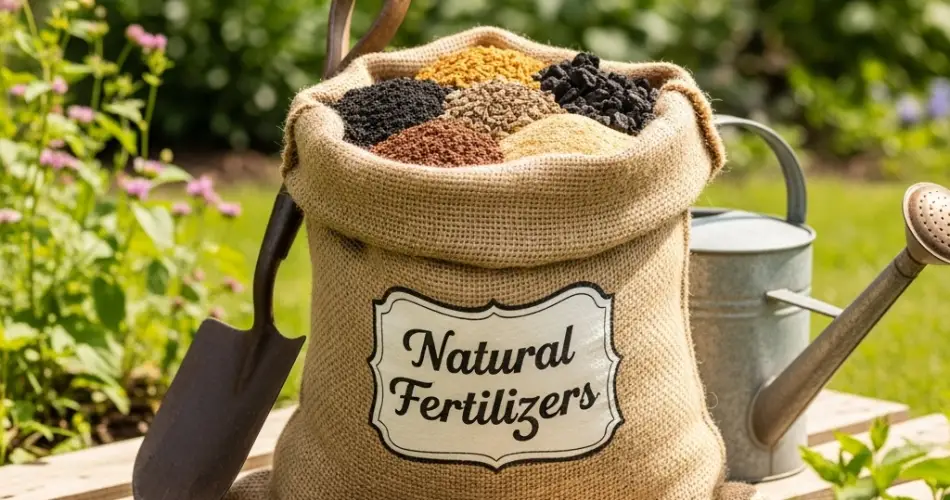In the pursuit of a healthy and thriving garden, one of the best decisions a gardener can make is to go organic. Natural fertilizers not only enrich your soil with essential nutrients but also promote long-term soil health, encourage beneficial microbial life, and reduce the risk of chemical buildup. Whether you’re growing vegetables, herbs, or ornamental plants, organic fertilizers offer a sustainable and effective way to power your garden naturally.
Let’s explore the benefits of using natural fertilizers and how to make the most of them for bigger blooms, tastier harvests, and healthier soil.
Why Choose Organic Fertilizers?
Organic fertilizers are derived from plant, animal, or mineral sources. Unlike synthetic fertilizers, which often contain concentrated chemicals, organic options release nutrients slowly and work in harmony with nature. Here are some key benefits:
-
Soil health improvement: Organic matter improves soil structure, increases water retention, and promotes earthworm and microbial activity.
-
Slow, steady nutrient release: Organic fertilizers feed plants gradually, preventing nutrient burn and reducing the risk of runoff.
-
Environmentally friendly: They reduce pollution and are safer for pets, pollinators, and humans.
-
Sustainable and renewable: Many organic fertilizers are made from waste products, making them a smart eco-conscious choice.
Common Types of Organic Fertilizers
Understanding the various natural fertilizers available can help you choose the right mix for your garden’s specific needs.
1. Compost
A staple in organic gardening, compost is decomposed organic material—like vegetable scraps, leaves, and grass clippings. Rich in nutrients and teeming with beneficial microbes, compost improves soil structure and adds a balanced dose of nitrogen, phosphorus, and potassium.
Tip: Apply a 1–2 inch layer of compost around plants or mix it into your soil at the start of the season.
2. Manure
Well-aged animal manure (from cows, chickens, rabbits, or horses) is high in nitrogen and adds organic matter to the soil. It must be composted first to kill pathogens and reduce odor.
Best for: Heavy feeders like tomatoes, squash, and corn.
3. Worm Castings
Produced by composting worms, worm castings are nutrient-rich and packed with microorganisms. They improve soil aeration, drainage, and plant resistance to disease.
Usage: Mix into potting mixes, seed-starting trays, or apply as a top dressing.
4. Bone Meal
Made from ground animal bones, bone meal is high in phosphorus and calcium, essential for root development and flowering.
Ideal for: Bulbs, root vegetables, and flowering plants.
5. Blood Meal
This dried animal blood is extremely high in nitrogen and provides a fast boost to leafy plants.
Use sparingly, as over-application can burn plants.
6. Fish Emulsion
A liquid fertilizer made from fish waste, fish emulsion offers a quick nitrogen boost and is gentle enough for young seedlings.
Application: Mix with water and apply every 2–3 weeks as a foliar spray or soil drench.
7. Seaweed/Kelp
Seaweed fertilizers provide a wide range of trace minerals and growth hormones that support plant development and stress resistance.
Best used as a supplement alongside other fertilizers.
DIY Natural Fertilizer Recipes
Creating your own fertilizers at home is simple, cost-effective, and environmentally friendly.
Banana Peel Tea
Banana peels are rich in potassium and phosphorus.
How to make:
-
Chop banana peels and soak in water for 2–3 days.
-
Use the liquid to water your plants.
Crushed Eggshells
A great source of calcium, eggshells help prevent blossom end rot in tomatoes and peppers.
Use: Dry, crush finely, and mix into the soil or compost.
Coffee Grounds
Used grounds are mildly acidic and rich in nitrogen.
How to use: Add directly to compost or sprinkle around acid-loving plants like blueberries and azaleas.
Epsom Salt Spray
Provides magnesium and sulfur, which are essential for chlorophyll production and nutrient uptake.
Recipe: Dissolve 1 tablespoon in a gallon of water and spray once a month.
Tips for Using Organic Fertilizers Effectively
-
Know your soil: Conduct a soil test to understand what nutrients are lacking before adding fertilizers.
-
Follow proper timing: Apply fertilizers in early spring or during active growing periods to maximize absorption.
-
Don’t overdo it: Organic fertilizers are safe, but overapplication can still cause nutrient imbalances.
-
Combine for balance: Use a mix of slow-release (like compost) and fast-acting fertilizers (like fish emulsion) to meet different plant needs.
-
Mulch to retain nutrients: Organic mulches like straw or shredded leaves help hold in moisture and slowly break down into fertilizer.
Final Thoughts
Switching to organic fertilizers is a step toward a healthier, more sustainable garden. These natural solutions feed not only your plants but also the life in your soil, creating a thriving ecosystem that supports abundant harvests and long-term fertility. Whether you’re using compost, manure, or homemade banana tea, organic fertilizers prove that you don’t need chemicals to grow strong, vibrant plants.
Embrace the organic advantage—and let nature do the heavy lifting in your garden.



